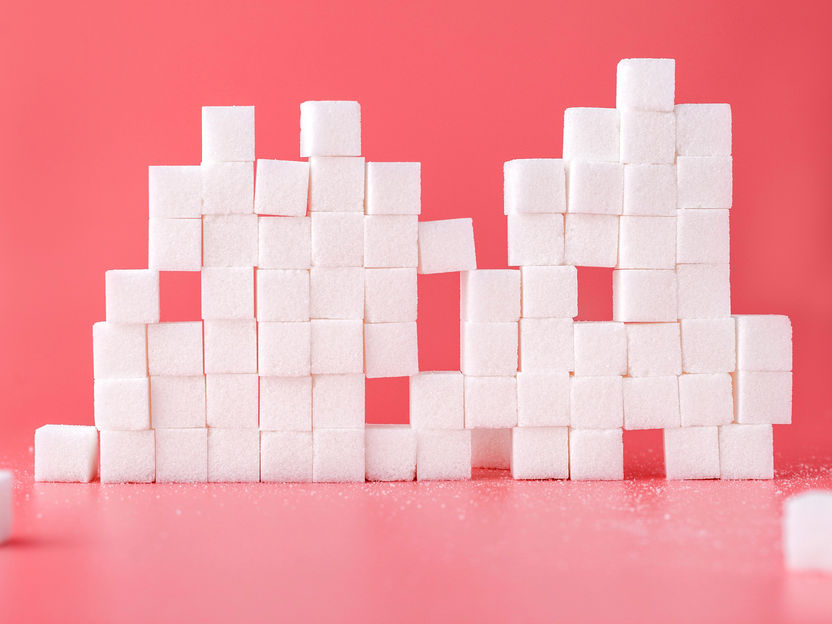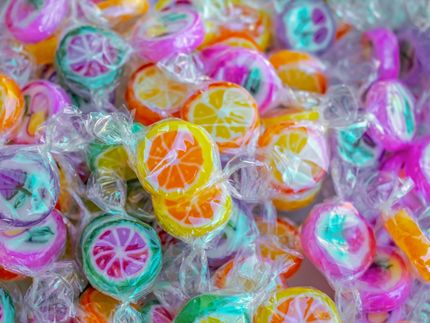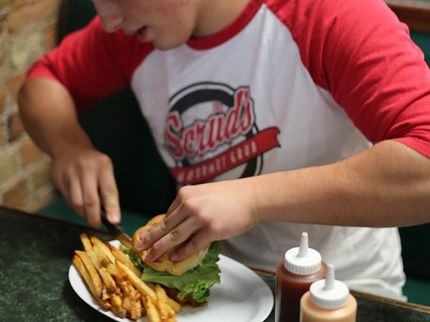Call for Ban on Using Cartoon Animations on-pack to Market Unhealthy Products to Children
Half of all products are so unhealthy they couldn’t be advertised on TV during kids programmes, or on Transport for London
In the biggest survey of its kind[1], new research by Action on Sugar and Action on Salt based at Queen Mary University of London, in association with Children’s Food Campaign, has found half (51%)[2] of 526 food and drink products which use cartoon animations on pack to appeal to children are unnecessarily HIGH in fat, saturated fat, sugar and/or salt. Manufacturers and retailers are accused of deliberately manipulating children and parents into purchasing ‘dangerously’ unhealthy products, which can encourage pester power and excessive consumption.

Photo by Mae Mu on Unsplash
Today, Action on Sugar, Action on Salt, Children’s Food Campaign and other organisations[3] are calling for a complete ban of such marketing tactics on UNHEALTHY products and for compulsory ‘traffic light’ nutrition labelling, giving parents the chance to make healthier choices. If marketing on children’s packaging were to follow the same advertising codes as set by the Committee for Advertising Practices for broadcast advertising[4], half would fail the eligibility criteria and therefore would not be allowed to be advertised to audiences under the age of 16[5]. Action on Salt, Action on Sugar and Children’s Food Campaign call for this criteria to be extended to all forms of media[6], and to any programme watched by a child, as is currently being discussed in the Governments’ latest consultation on further advertising restrictions for products high in fat, salt and sugar[7].
Products with licensed characters (from TV and film)
Over one in five (21%) products used licensed characters[8] (e.g. Disney, Peppa Pig and Paw Patrol) that are often well recognised by young children. More than a third (37%) were found on confectionery, chocolate, cakes and ice cream, which are not recommended for regular eating. Shockingly, 32 of the 94 products surveyed (34%) using licensed characters have a red label for either fat, saturated fat, sugars and/or salt, classifying them as being unhealthy. Paw Patrol and Peppa Pig were the worst character offenders, with more than half of products (57%) with Paw Patrol and 50% with Peppa Pig imagery being high in fat, salt and/or sugar. Examples include:
-
Kinnerton Paw Patrol 6 Mini Chocolate Bars with over 60% sugar and 17% saturated fat (7.2g sugar and 2.1g saturated fat/serving). Just one 12g chocolate bar[9] would provide a 4-6 year old with over a third (38%) of their maximum daily recommended intake for sugars[10].
Paw Patrol Milk Chocolate Coins with 60% sugar; eating 4 coins would provide a 4-6 year old with 12g sugar[11] - nearly two thirds of their maximum daily recommended intake.
Cathedral City Paw Patrol Nibbles Mild Cheese Pack, contains 1.8g of salt/100g (0.3g/bag).
Peppa Pig Candy Bites with 99% sugar
Peppa Pig Muddy Puddle Cupcakes with 47.9% sugar (9.6g sugar and 0.8g saturated fat per cupcake).
A select few companies have used licensed characters responsibly to promote water, fruit or vegetables. Some had also opted for lower sugar variants e.g. Disney Kitchen cake mixes have 15-16g sugar per 100g compared to Despicable Me Make Your Own Minion Cupcakes with 49.7g sugar per 100g.
Heinz use an array of licensed characters, from Disney’s Frozen to Peppa Pig, with various health claims on pack such as ‘1 of your 5 a day’ and added vitamin D. However, whilst they do not have red nutrition warning labels per 100g, a can of their pasta shapes with tomato sauce would provide a child with 0.8g salt per can, which is 40% of the maximum recommended intake for a 1-3 year old[12], without taking into account additions such as cheese or toast. In comparison, a product with plainer packaging e.g. Asda’s Spaghetti Loops in Tomato Sauce contain a third less, at 0.52g salt per can.
In a Children’s Food Campaign Parents’ Jury survey in 2018[13], more than 9 in 10 parents said they supported the Government bringing in restrictions on the use of child friendly TV and film characters on foods high in fat, salt and sugar. The use of these characters, and associated toys, was the second highest issue of concern for parents in terms of junk food marketing tactics used to target children, after TV advertising.
Products with brand mascots and characters
Meanwhile, of the 434 products that use brand mascots and characters[14] appealing to children, a staggering 53% would receive a red (high) warning label on pack for sugar. Examples include:
-
Moo Quick Milk Magic Sipper Strawberry was packed with the most sugar – a whopping 94.0g/100g – that is over 23 tsp of sugar (5.6g/straw).
Morrisons Dolly Mixtures with an animated mouse character contain 86.6g sugar per 100g, or 21.7g for a third of a bag - over 5 teaspoons worth of sugar. This would be more than the maximum recommended intake of sugars for a 4-6 year old.
Aldi’s The Juice Company Kids Smoothie Orange, Pineapple & Mango with images of animated fruit contained the most sugar per suggested serving, with 27g sugar in 200ml; equivalent to 7 teaspoons. This would be more than the maximum recommended intake for children under 10 years.
Salt offenders included:
-
Peperami Tex-Mex Snack Pack with an image of Peperami’s Animal mascot wearing a Mexican sombrero at 4.30g/100g – 0.22g per piece, or 2.15g per bag. That’s more than a third of an adult’s maximum recommended daily intake of salt, and half a bag would provide a 1-3 year old with over 50% their maximum daily intake (2g/day).
Cheetos Cheese, with an image of their Cheetah mascot, scores not much better at 3.20g of salt/100g (0.96g/30g portion).
Fray Bento’s Meatballs in Bolognese sauce with an image of an alien provides 2.40g salt per portion (1.3g/100g), which is more than the maximum daily recommended intake for a 1-3 year old (2g/day).
Astonishingly, only 18 healthy food and drink products (such as fruit, vegetables and water) used on-pack child friendly animations. Lidl came out as the best retailer in that respect with their Oaklands range of fruit and vegetables.
This survey not only highlights products with extremely high levels of fat, saturated fat, sugars and/or salt, but also comparably healthier alternatives, demonstrating that reformulation is possible. The majority of products however did not have ‘traffic light’ nutrition labelling[15], making it difficult for people to work out at a glance what is and isn’t healthy. Action on Salt and Action on Sugar are calling for mandatory ‘traffic light’ nutrition labels on front of pack. Tools are available to help people make a healthier choice such as FoodSwitch[16], the free smartphone app, which allows customers to scan the barcode of a product and see healthier alternatives (search FoodSwitch in the app store).
Examples of high and healthier alternatives with packaging appealing to children include:
|
|
Product |
Total Fat (g/100g) |
Sat Fat (g/100g) |
Sugar (g/100g) |
Salt (g/100g) |
|
Snack Bars |
Kellogg's Rice Krispies Snack Bar |
11 |
8.5 |
29 |
0.55 |
|
Healthier Option |
Little Dish Carrot Cake Fruity Bites |
11 |
1.4 |
25.8 |
0.07 |
|
Ambient Meal |
Fray Bentos Meatballs in Bolognese Sauce |
5.7 |
1.8 |
3.1 |
1.3 |
|
Healthier Option |
Crosse & Blackwell 4 Kids Spongebob Meatballs in Tomato Sauce |
3.4 |
0.7 |
1.5 |
0.59 |
|
Yogurt |
Milbona Fruity Duo Fromage Frais Strawberry & Banana |
3.0 |
2.0 |
14.6 |
0.09 |
|
Healthier Option |
Asda 8 Strawberry Fromage Fraistubes (Disney – Toy Story) |
1.3 |
0.8 |
8.0 |
0.1 |
Registered Nutritionist Dr Kawther Hashem, Campaign Lead at Action on Sugar based at Queen Mary University of London, said: “It’s shocking that companies are exploiting the health of our children by using cartoon characters on their high sugar food and drink products, particularly on chocolates and sweets, which are already hard to resist for children. Do we really need to entice children to want these products more and pester their parents to buy them? It is time for regulation to curtail the industry’s unhealthy habits.”
Sonia Pombo, Campaign Lead at Action on Salt based at Queen Mary University of London said: “Parents want to make healthy choices for their children, but companies are not making this easy for them. The food industry has a moral duty to stop putting profits first and sell their products responsibly. There is plenty of opportunity for companies to either reformulate and make their products healthier, or make their already healthier products more appealing to children. Until then, the government must intervene and ensure all food and drink manufacturers at least display ‘traffic light’ labelling so parents can see, at a glance, what is in the food.”
Graham MacGregor, Professor of Cardiovascular Medicine at Queen Mary University of London and Chairman of Action on Sugar and Action on Salt said: “Many of the food products exposed in our survey present a serious risk to the future health and wellbeing of children. High sugar products increase the risk of obesity, type 2 diabetes, various cancers and tooth decay and high salt products put up blood pressure, which leads to cardiovascular disease later in life. The government needs to restrict the use of such packaging on unhealthy products including marketing them to children.”
Tom Watson MP, Deputy Leader of the Labour Party said: “This research reveals the scale of irresponsibility in the industry. We’re in the midst of a child obesity crisis and companies are using cartoons to advertise their junk foods to kids. It’s unacceptable. It’s time we changed the rules to get these cartoons off our packs.”
Barbara Crowther, Children’s Food Campaign said: “Disney, Nickelodeon, Cartoon Network and all the food brands know how much power these cartoon characters have on children’s preferences. That’s why millions of pounds change hands in licensing deals each year. Parents tell us how their kids’ favourite characters result in pestering for sweets, snacks and fast foods, and they overwhelmingly support the idea of a ban. The food industry has had every opportunity to act, but this research clearly shows it’s not enough. It’s time for the Government to step in, and underpin tighter advertising restrictions with similar rules for packaging and promotions.”
__________________________
[1] The survey looked at 520 products with packaging that would appeal to children, available in all major UK retailers (Aldi, ASDA, Co Op, Iceland, Lidl, Marks & Spencer, Morrisons, Sainsbury’s, Tesco and Waitrose). Product data was collected in store in March 2019, from product packaging using the FoodSwitch Data Collector App, and where not available, captured online from the retailers’ website. Duplicates of the same product with different sizes were removed. Nutritional information was collected for all products, included those with multiple nutrition information panels (i.e. products with different flavours), bringing the total of products with nutrition information to 527.
Inclusion criteria of what would constitute as ‘child-friendly’ packaging are:
- Products with animated brand equity/licensed cartoon characters on products, as well as non-animated TV shows aimed at children (e.g. Mr Tumble, Teletubbies)
- Products with an animated character on front of pack
Exclusion criteria of what would constitute as ‘child-friendly’ packaging are:
- Products with character embedded in their logo (e.g. Pringles, Laughing Cow)
- Seasonal Easter products e.g. Easter products
- Large occasional/celebration cakes
[2] Products were classified as high in fat, saturates, sugars and/or salt according to the Department of Health’s Guide to creating a front of pack (FoP) nutrition label for pre-packed products sold through retail outlets, where products would be marked with a red label on front of pack if they exceeded the following values:
Fat >17.5g/100g for FOOD, >8.75g/100ml for DRINKS
Saturates >5g/100g for FOOD, >2.5g/100ml for DRINKS
Sugars >22.5g/100g for FOOD, >11.25g/100ml for DRINKS
Salt >1.8g/100g for FOOD, >0.75g/100ml for DRINKS
A total of 267 products would have received a red label on front of pack
[3] Action on Sugar
Action on Salt
Children’s Food Campaign
First Steps Nutrition
Living Loud
[4] Products high in fat, salt and/or sugars (HFSS) are classified by the Department of Health Nutrient Profiling Model (NPM) - foods scoring 4 or more points and drinks scoring 1 or more are classified as HFSS. The Committee for Advertising Practices (BCAP and CAP) have set stringent advertising codes and policies for industry to follow, but responsibility for the day-today regulation lies with The Advertising Standards Authority (ASA). Current rules from the Advertising Standards Authority state that “HFSS product advertisements must not be directed at under-16’s through the selection of media or the context in which they appear and no medium with an audience that consists of more than 25% of under-16s should be used to advertise HFSS products”
[5] Of a total of 519 products surveyed, 477 had sufficient information to determine NPM score. Of those, 238 would not be eligible for advertising, i.e. 50%
[6] Action on Sugar and Action on Salt: An evidence-based plan to prevent obesity, type 2 diabetes, tooth decay, raised blood pressure, cardiovascular disease and cancer in the UK
[7] HM Government consultation on ‘Introducing further advertising restrictions on TV and online for HFSS products’
[8] Images available on request
[9] One Paw patrol mini chocolate bar (12g) contains 7.2g sugars
[10] The maximum daily-recommended intake of sugar for 4-6 year olds is 19g. For 7-10 year olds, it is 24g. Information taken from Public Health England’s Sugar Reduction: Evidence for Action
[11] Each bag of chocolate coins contains 15 individually wrapped coins. The total bag weight is 75g, therefore each coin weighs 5g each. Four coins would total 20g, providing a child with 12g sugars.
[12] The government recommend the following maximum salt intakes for children:
Age Maximum Salt Intake
0-6 months <1g / day
6-12 months 1g / day
1-3 years 2g / day
4-6 years 3g / day
7-10 years 5g / day
11 years and above 6g / day
[13] The Children’s Food Campaign Parent’s Jury Report
[14] Images available on request
[15] Presence of front of pack labelling was captured during this survey – 70% of all products surveyed (i.e. 317 out of 456) did not have front of pack colour coded labelling
[16]FoodSwitch UK app helps you find healthier choices – simply scan the barcode of your regular brand to get colour coded nutrition information and see a list of healthier alternatives





























































